West Tanfield
OS grid reference:- SE 268 788
The small and characterful village of West Tanfield lies on the north bank of River Ure which is spanned by a three arched bridge dating to 1734. The village is situated around six miles to the north of Ripon on the A6108 road, which runs from Ripon to Masham and Wensleydale.
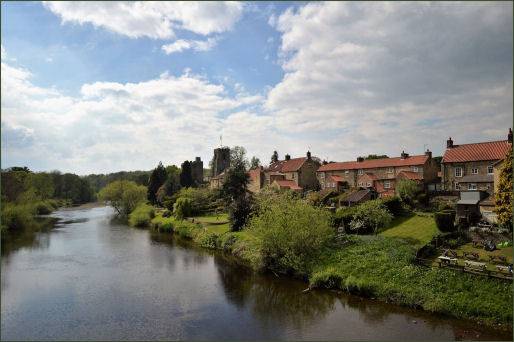
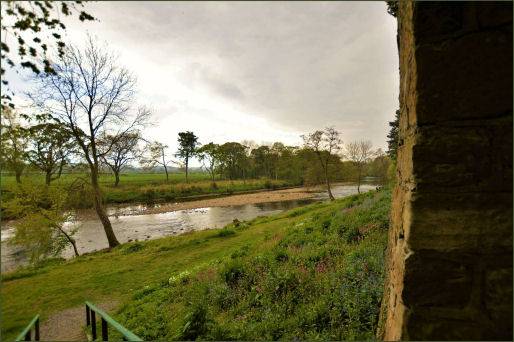
West Tanfield derives its name from the Anglo-Saxon words tana feld, which mean "open land where young shoots grow". It is referred to in the Domesday Book of 1086 as Tanefeld. The manor was owned by Thorkil at the time of the Norman conquest, but was later granted to Count Alan of Brittany, otherwise known as Alan Rufus and a relative and companion of William the Conqueror, who was probably present at the Battle of Hastings in October 1066 and was granted the Honour of Richmond in Yorkshire.
Chantry Cottage near the church dates back to Elizabethan times. The village pub, the Bruce Arms is an eighteenth century Coaching Inn which serves fine food. The other pub in the village, the Bull Inn, is pleasantly situated by the river and was the runner up in the favourite pub in Yorkshire 2014 and 2015 competition. Restored in 1699, parts of the inn are formed from what was once the ferryman’s cottage and the artist JMW Turner drew scenes of the nearby ancient Marmion Tower on one of his many tours of Yorkshire.
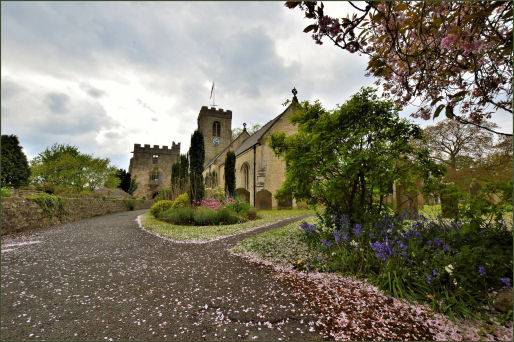
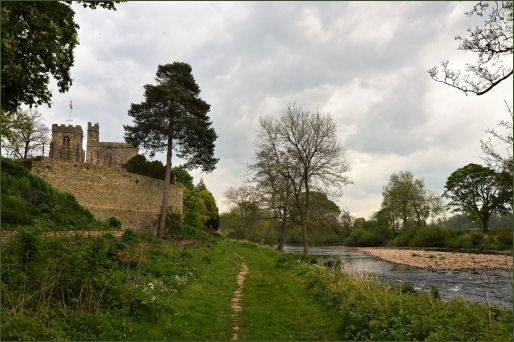
Near to the village are the Thornborough Henges, known as the 'Stone Henge of the North', one of the most important ancient sites in Britain. It consists of an unusual prehistoric monument complex which features three aligned henges from which the site derives its name. Thornborough Henges have been described by English Heritage as "the most important prehistoric site between Stonehenge and the Orkneys".
Church of St. Nicholas
The perpendicular style village church of St. Nicholas stands on the western side of Burnt Lane, with Main Street on the northern flank and Church Street and the River Ure to the south. It is a Grade I Listed building, the nave and chancel were built in the fourteenth century, while the north aisle and the fifteenth century. The three-stage tower was added in the fifteenth century, with diagonal angle buttresses and an embattled parapet and moulded plinth.
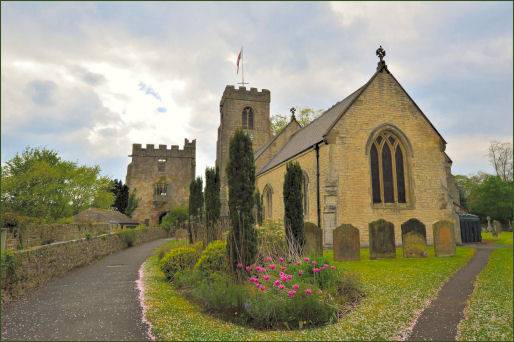
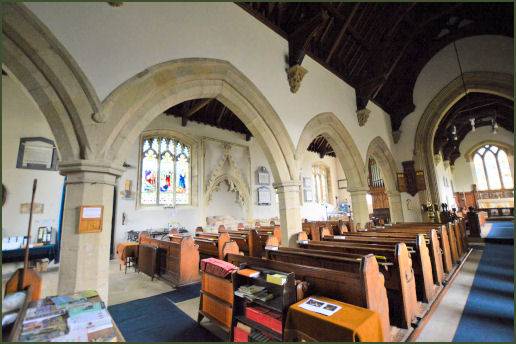
The interior of the building boasts a solid hammer beam roof with carved corbels with foliage, Victorian choir stalls, altar rail and reredos. In the north aisle is some fifteenth century stained glass with figures including a large figure of a female saint. The building was restored in 1860.
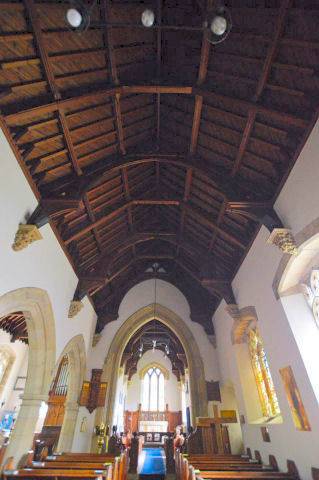
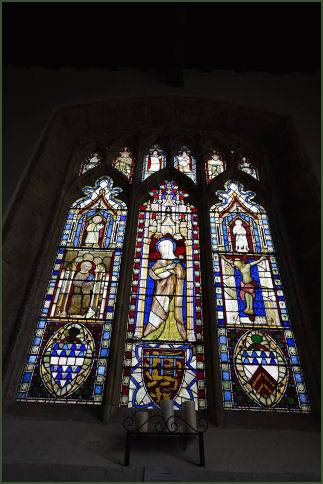
There are several monuments to the Marmion family inside the church. In the centre of the north aisle are the alabaster effigies of Sir John Marmion, who died in 1387 fighting in Spain with John of Gaunt, Duke of Lancaster.and his wife Lady Elizabeth, they lie on an iron hearse, at his wife's head are two angels while at her feet is a dog. The tomb under the ogee arch and crocketed pinnacle may be Sir John Marmion who died about 1300. The female figure by him may be his wife Maud.
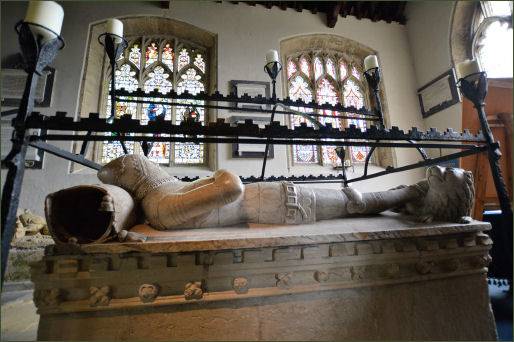
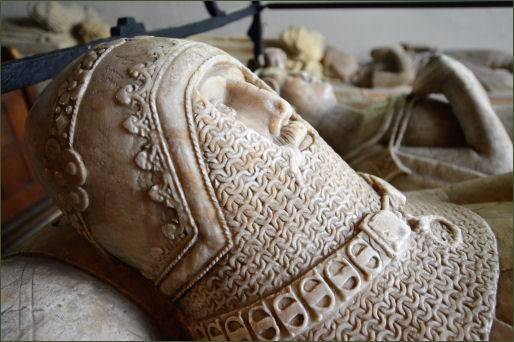
The church underwent an extensive restoration in 1859.
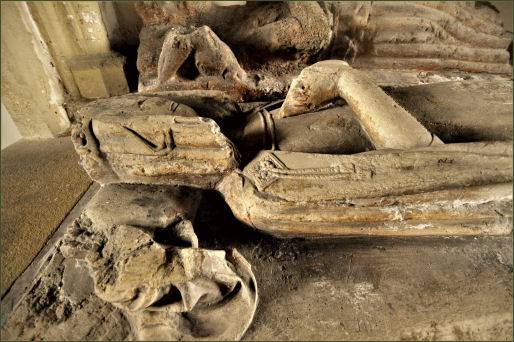
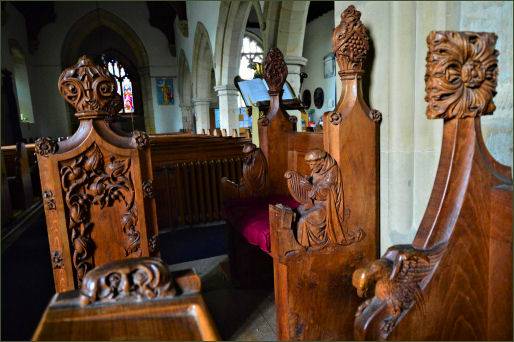
The Marmion Tower
The Marmion Tower is a fifteenth century gatehouse which once belonged to the now vanished manor house at West Tanfield. This was the former home of the Marmion family, which was known as the Hermitage, but later become known as Tanfield Castle. Legend relates that the Marmion family were Champions of Normandy before arriving in England at the time of the Anarchy during the reign of King Stephen.
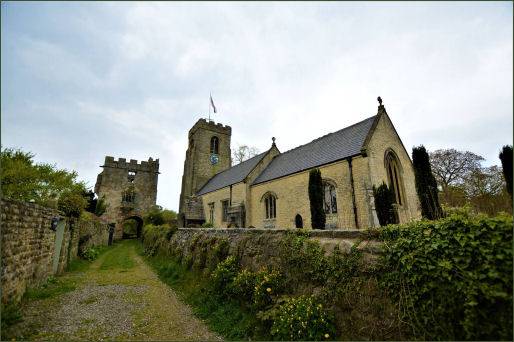
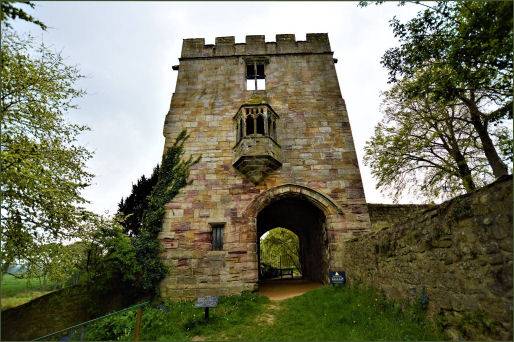
A spiral staircase at the north-west corner of the gate passage leads up to the first floor. At the entrance to the first floor a recess has been cut into the west wall to allow the door to open. This is probably because the ground-floor vaults replaced an earlier timber floor set at a lower level. The first-floor room has similar features to the ground-floor room, such as a garderobe and a fireplace, but these are more ornate. The elaborate oriel window replaced an earlier window recess. On the second floor a horizontal channel is visible along the wall. This carried the support for the floorboards and the earlier roof structure before the tower was heightened.
